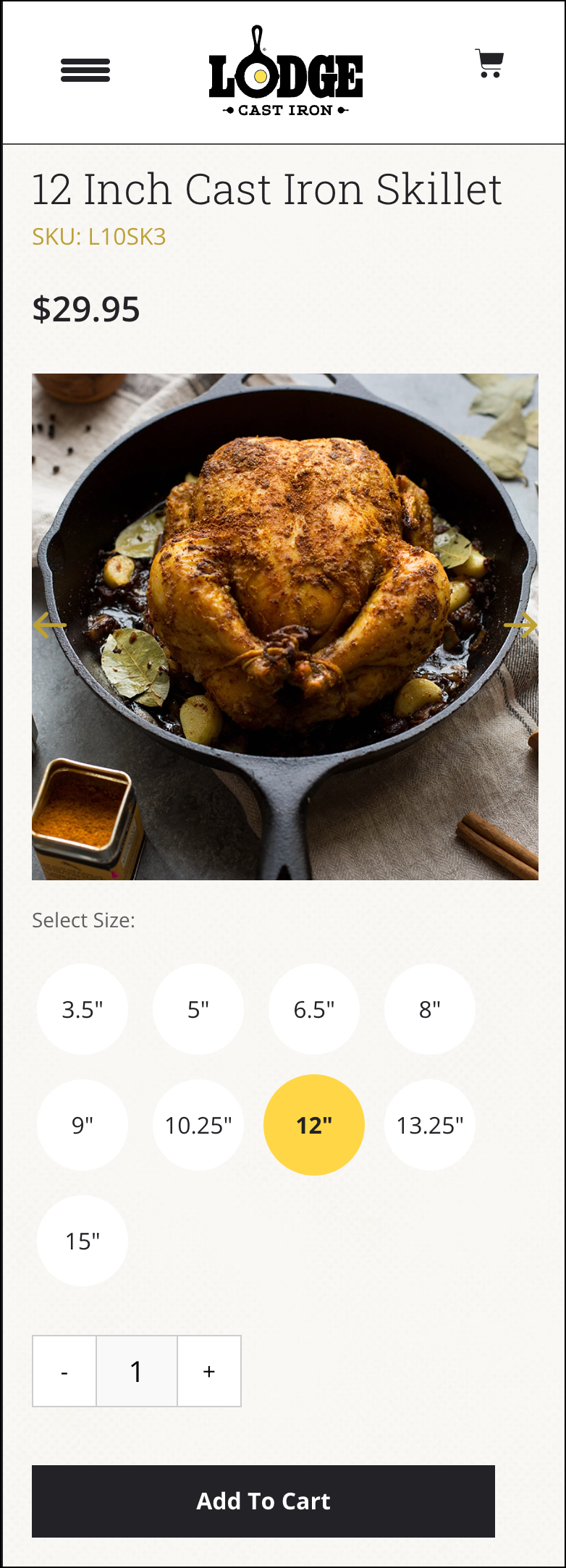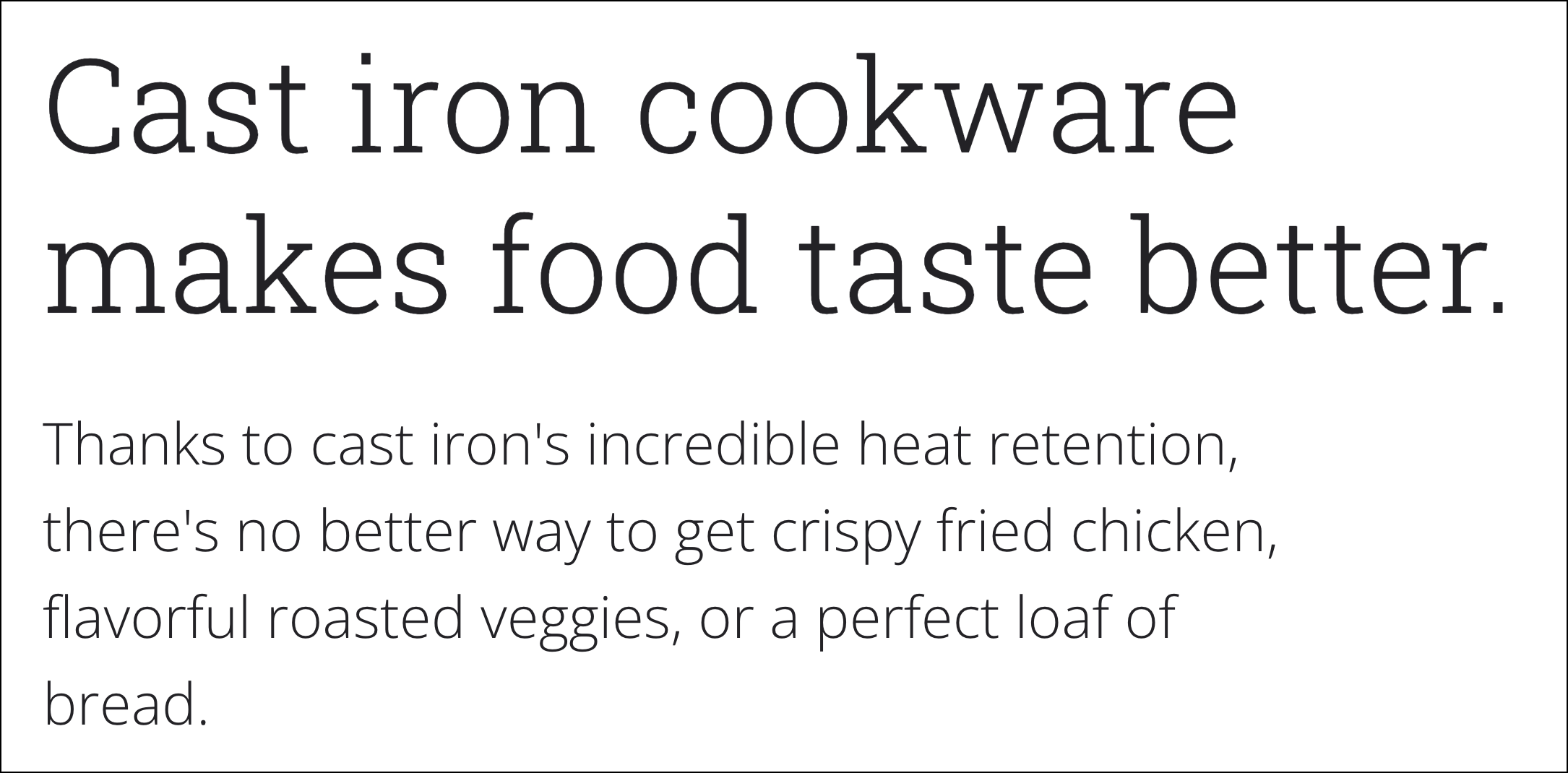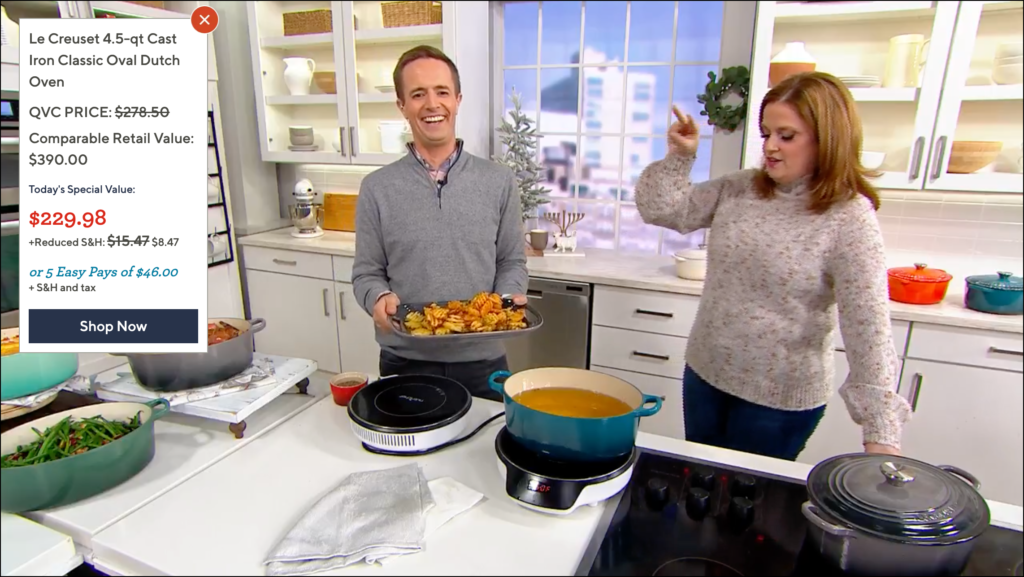Blog
Debating and Copywriting
Debaters are annoyingly good at winning arguments … and us product page copywriters should learn from them. Here’s why:
Shoppers make product page purchase decisions using mental pro and con lists. If the pro column isn’t bigger than the opposing side you can forget about this Add To Cart button getting clicked:

Most sites are stuck in the 2.5% to 3% conversion range. Zoom past this crappy average by channeling your inner debater.
Debaters do 4 things particularly well:
1: They Research the Heck out of a Topic
You must start by assuming you know nothing. Let’s see this using an example.
Say Lodge hired us to improve the sales of their bestselling cast iron pan page (they should):

I’d start by Googling “benefits of cast iron pan for cooking”.
Here are some of the interesting things that came up:
– Cast iron is chemical-free. Most nonstick pans contain perfluorocarbons, which is a chemical linked to cancer, developmental problems, liver damage, and more. Source.
– Cast iron cookware is reliable, long-lasting, and full of character. Source.
– Cast iron cookware requires little cleaning and maintenance after its initial seasoning. After you finish cooking, simply rinse with water and dry thoroughly. Source.
– Cast iron cookware offers an even heating area for cooking no matter what type of cooking surface you use. Source.
– Adds iron to your food. Cooking with cast iron pans naturally adds 20x more iron content. Source.
Ok, so I have my initial Selling Angles. Using these I can construct a Sales Pitch that’ll take shoppers from “this is interesting” to “I knew I should have pulled the trigger years ago.”
2: Debaters Prepare Both Sides of the Argument
Debaters are required to argue both sides of the resolution over the course of the competition.
A benefit of doing this is that, by preparing one side, they are able to strengthen the other side as well. Similarly, by understanding your product’s strengths and perceived shortcomings you can amplify the strengths and create bridges across perceived shortcomings.
The wrong strategy is trying to underplay a perceived shortcoming. The consumer is smart and she will consider the things you are trying to hide. Absent a compelling explanation she’ll construct one for you— and it will not be to your advantage.
To see this let’s return to the Lodge example. To unearth a negative I Googled “disadvantages of cast iron cookware”.
As it turns out, one disadvantage is that cast iron pans take longer to heat up. Further research revealed an advantage linked to this perceived shortcoming:

I’ve found the perfect counter-punch to the “but it takes longer to heat up” objection. On the product page, I would frame it like this:
Some prematurely reject cast iron because it takes longer to heat up. It’s a valid objection.
But while heating time is longer cast iron is also ridiculously good at retaining that heat. And that means incredible flavor-locking steak sears 🥩. It’s also why, if you’ve tried frying chicken on a non-cast iron pan, and I’m sure you have, you know it ain’t what you get at your favorite fried chicken 🍗 spot.
I hope it’s clear why this approach is so much better than trying to downplay the “but it takes longer to heat up” objection.
Client story time. I was working with a client who didn’t want to offer free shipping. His view was that since he was paying for shipping it was only fair the cost be passed to the buyer.
But we knew buyers expected free shipping. So here’s what we did: on the cart page, right next to the $5.99 shipping fee line, we added a Why isn’t shipping free? link.
On click, a popup appeared. It helped the shopper understand that free shipping isn’t a real thing. It’s only possible when the retailer adjusts prices to make it appear free. We let the reader know transparency was a core value and that shipping was $5.99 because that’s what we paid to get your package safely to your door.
That explanation improved conversions by 17%. We didn’t try and hide behind the fact that shipping was $5.99, we used a debater’s approach to explain our reasoning. And most who encountered it ended up thinking:

3: Debaters Make the Argument Compelling
Once the debater has formulated their argument, they need to present it convincingly, and with enthusiasm.
You can have a deep understanding of the inner workings of your ideal customer’s problem and know every single thing there is to know about your product, but if you can’t write in a way that persuades shoppers to take action none of that matters.
I watch a fair amount of QVC and love the genuine enthusiasm of the presenters.

Even though I know I’m being pitched it’s hard not to feel the convection energy of their enthusiasm 5 minutes into the presentation.
Debaters don’t just get us to nod in agreement, they bring us to our feet.
4: They Refine Their Argument
Debaters practice their speeches dozens of times before the big day. They practice, discuss, get feedback, and refine. Over and over again.
This is what you need to do with your product page.
Hope you don’t mind me asking but when was the last time you rewrote your bestseller page description?
Option A: {A few days ago}
Option B: {A few weeks ago}
Option C: {Can’t remember}
When I onboard new clients I ask this question and the most common response is {Can’t remember}. This is a problem— and an opportunity.
Your bestseller is driving the most sales on your site. How do you know it’s fully optimized? You don’t.
My recommendation: every 30 days read through the latest bestseller reviews and customer service chat logs for the bestseller.
Then, on a blank sheet, write your description from memory— just free-flow writing.
Once done look at the existing description and note important details that were missed. Add those to your rewrite.
Now compare the two versions (new rewrite 🆚 the older description). I’m pretty confident you would have picked up a few things to make your pitch even stronger.
Do this every 30 days and every 30 days your product page will become more effective at converting new visitors.
Next Chapter
Now that you’ve seen what debating and copywriting have a lot in common it’s time we introduce you to another family member: What Do Conversion Copywriters Have in Common With Lawyers?




Comments 4
fair enough – i can see the consumer effortlessly thinking of plenty of arguments about your product, so this makes sense to do (love the visuals by the way)
ReplyExcellent Rishi! You are the Master
ReplyBrilliant and well explained!!
ReplyRishi Rawat
Hey, Javier. Glad you liked it. Also, it was great chatting with you yesterday. I’m looking forward to reviewing your homework 🙂
Reply